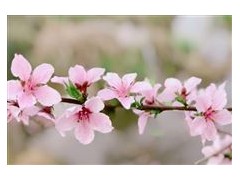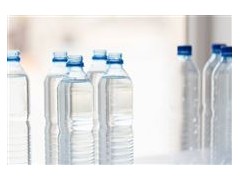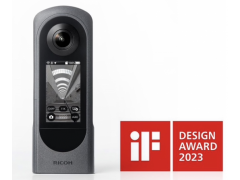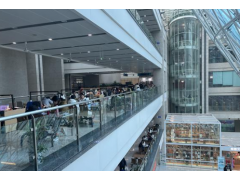Plastic turnover boxes are an important part of plastic packaging materials. They are mainly used for turnover in commodity circulation, and are also used for turnover of parts in the production process of commodities, including between upper and lower processes, between workshops and supporting facilities. The turnover of parts between the plant and the assembly plant. Plastic turnover boxes are different from most plastic packaging materials. Generally, plastic packaging materials are mostly disposable. After taking out the product, the packaging materials will complete their historical mission and be disposed of as waste. Turnover boxes are often recycled and reused after use. Many times, so in the design concept of the plastic turnover box, in addition to taking into account that it should have good protection and storage and transportation functions for the items contained in it during use, it is often necessary to consider the stacking of empty boxes to save storage. area, reducing transportation costs.
Plastic turnover boxes are usually obtained by injection molding of high-density polyethylene or polypropylene. High-density polyethylene has outstanding low-temperature resistance, and it still has good toughness at around -40°C. Its weather resistance is also better than polypropylene, but its heat resistance, rigidity and strength are slightly inferior to polypropylene. The main feature of polypropylene is good heat resistance (about 20°C higher than HDPE), high rigidity and high strength. The main disadvantage is poor low temperature resistance, and homopolypropylene shows a certain degree of brittleness at around 0°C. Therefore, despite the high price of polypropylene copolymers, people often use polypropylene copolymers with better cold resistance as raw materials for turnover boxes. Another defect in the performance of polypropylene is poor weather resistance. In polypropylene for turnover boxes, it is very necessary to add additives such as ultraviolet absorbers. Turnover boxes made of polypropylene and high-density polyethylene have many common features, such as light weight, high strength, good chemical resistance, good moisture resistance, non-toxic and tasteless, reliable hygienic performance, easy coloring and surface modification, etc. Therefore, the application fields of the two kinds of plastic turnover boxes often penetrate each other without obvious boundaries.
The materials that can be used to produce plastic turnover boxes are HDPE and PP, and the required MI is 3-10g/10min. Both HDPE and PP materials have their own advantages. HDPE has good low temperature resistance and good impact resistance, but its heat resistance and strength are slightly inferior to PP. PP has good heat resistance, high strength and high rigidity, but its low temperature resistance is not good, so it is not suitable for use in cold areas; in addition, its weather resistance is not good, so it is not suitable for outdoor use. In order to improve the deficiencies of the two materials, blending of PP and HDEP is often used to solve the heat resistance and low temperature resistance of the two; in addition, the copolymerized PP has good low temperature resistance, although the price is slightly higher, it is often used. When selecting the resin, it is required that the MI for injection is 3-10g/10min, and the MI for hot extrusion and cold pressing is 3-7g/10min. If PP is selected as the material, it is necessary to add an appropriate amount of ultraviolet light absorber to improve weather resistance.
The methods of producing plastic turnover boxes include injection method and hot extrusion and cold pressing method. The injection method is suitable for forming large batches of products with complex shapes, and its advantages are high production efficiency and high dimensional accuracy of the products; the hot extrusion and cold pressing method is suitable for small batches of low-priced products with simple shapes, and its advantages are less investment in equipment and can be adapted to It is suitable for molding raw materials with poor fluidity.
2. Calcium plastic corrugated box
The basic structure of the calcium-plastic corrugated box is the same as that of the corrugated box. It is made of calcium-plastic paper after being corrugated and bonded to make a corrugated board and then cut and processed. Calcium-plastic corrugated paper is usually made of highly filled polyethylene, and its filler is generally calcium carbonate, with a filler content of more than 40%. The application of a large number of fillers is conducive to reducing product costs and improving its market competitiveness. At the same time, it can also significantly increase the rigidity of the product and improve the use effect. Calcium-plastic corrugated boxes can be reused, and waste can be recycled and reproduced. It is a popular and widely used packaging material.
The performance of calcium-plastic corrugated boxes and paper corrugated boxes is basically the same, but its waterproof and moisture-proof performance is far superior to that of paper corrugated boxes. Calcium-plastic corrugated boxes have high wet strength, which is an outstanding advantage for packaging liquid products. Even if the liquid container is broken and the liquid material is in contact with the calcium-plastic box, it can still maintain good strength and play a good role in packaging the goods. This is especially important for those liquid commodities that are more dangerous after the package is damaged, such as pesticides. Therefore, the chemical industry department has specified that calcium-plastic boxes must be used as outer packaging for liquid pesticide products.
Calcium plastic boxes also have the advantages of non-toxic, tasteless, and good hygienic performance. It is not easy to mold and has strong corrosion resistance, which is also very beneficial for food packaging. Compared with kraft paper corrugated boxes, calcium-plastic boxes have a relatively obvious shortcoming in performance, which is that the surface friction coefficient is low and the stacking performance is poor. Calcium-plastic boxes have high compressive strength. In addition to competing with traditional kraft paper corrugated boxes, they are used for the outer packaging of pesticides (all calcium-plastic boxes have been used), chemical reagents, daily chemical products, food, and daily commodities. It also partially entered some fields that were originally packed in wooden boxes. The plastic materials that can be used to produce plastic corrugated boxes are HDPE and LDPE, the filler is calcium carbonate, and other ingredients are antioxidants, ultraviolet absorbers, etc.
3. Styrofoam packing box
Polystyrene foam has good heat insulation performance, and the insulation box made of it is used for the packaging of fish, shrimp and other aquatic products, as well as flowers, fruits and other commodities. When the commodity is out of the refrigeration (or freezing) chain, it is kept in a relatively low temperature environment for a long time, thus effectively prolonging its freshness and shelf life, improving the circulation conditions of the commodity, and bringing great benefits. Considerable economic benefits. Therefore, in recent years, the application of polystyrene foam turnover packaging boxes is increasing.
The polystyrene foam packaging box is made of polystyrene foam beads, its softening temperature is low (only about 88°C), and the actual maximum operating temperature is only about 75°C, so the polystyrene foam plastic packaging box is only suitable for Used at lower temperatures, generally used in room temperature and low temperature fields. The thermal conductivity of polystyrene foam decreases with the decrease of density. When the density drops to 32kg/m3, the thermal conductivity reaches the lowest value, and when the density decreases again, the thermal conductivity tends to increase. Therefore, from the perspective of heat insulation, the density of polystyrene foam packaging boxes is about 32kg/m3.
There is a close correlation between the compressive strength of polystyrene foam and its density. Styrofoam decreases in density and its compressive strength decreases. The density of polystyrene foam is small, and the consumption of raw materials per unit volume is less. Within a certain density range, the cost by volume is lower when the density is small. Therefore, polystyrene foam packaging boxes sometimes take a smaller density (for example, 25kg/m3) instead of 32kg/m3.




